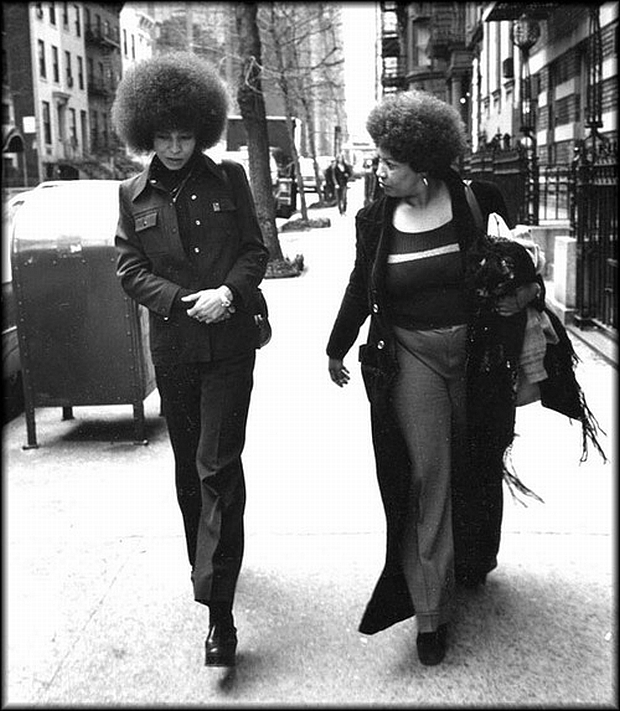Arts-Theater
Recent Documentary Shares “Pieces” of Morrison’s Treasures

By Maitefa Angaza
Toni Morrison is so loved that her death has ardent fans across the world declaring themselves shattered. Fortunately, we’ve been left a roadmap to her heart and a blueprint for mending ours. The documentary, The Pieces I Am, released just a few months ago, will help us to re-member our own pieces in the wake of this great loss. It is one of Toni’s parting gifts not only to her fans, but to the world. Such is the importance of what she set out to do and the brilliance with which she achieved it.
The Pieces I Am is directed by Toni’s longtime friend, photographer Timothy Greenfield-Sanders, who shot several of her book covers as well as photos for magazine profiles. The director of the nine-portion film project, The Black List, Greenfield-Sanders is a photographer first, but, as in the case of that project, was called to this documentary by its compelling subject. He’s worked on it for many years, but as Toni approached age 88, felt an urgency to finally complete it.
The documentary shares lots of unknown stories and, to her apparent delight, Toni gets to tell most of them. Painting the picture along with her are, Sonia Sanchez, Angela Davis, Farah Jasmine Griffin, Walter Mosley, Oprah Winfrey and others. It’s gratifying to see Black and Latin experts centered in the film, sharing their perspectives and their experiences with Toni.
The director used a device he hadn’t seen before in documentaries, and he wasn’t sure it would work – Toni speaks directly to the camera, while others do not. Although on-camera, they are in conversation with someone off-camera. I didn’t question that choice while watching the film. Although it felt a bit different, I was so engrossed that I assumed the something different was simply Toni, whose presence and voice are captivating.
The documentary briefly mentions Toni’s role in championing the careers of other Black writers such as Toni Cade Bambara, Henry Dumas, Wole Soyinka, Gayl Jones, Chinua Achebe and others and her midwifing of Muhammad Ali autobiography, The Greatest and the 1974 anthology, The Black Book. What Toni did to wedge open doors in a still-startlingly-white publishing industry was brave and crucial. There could have been more time spent on this.
Similarly, I was overjoyed to see how many of her literary girlfriends Toni took with her to Switzerland when she received The Nobel Prize. But footage of them all in her hotel room drinking champagne and helping her picking out what she’d wear, was fleeting. That was important for Black women to see and celebrate, but we didn’t really get the chance. Greenfield-Sanders has said that deciding what had to be left on the cutting-room floor was excruciating. Twelve interviews and lots of other material had to go. Perhaps among that was additional footage of that triumphant time in the hotel with her friends, celebrating not just for Toni, but for the gifted Black women who had never been counted in the canon, celebrated with prizes, or even published.
I also noted the absence of family members. Greenfield-Sanders says time is spent talking about them. Yes, but no one is talking to them. And there is no mention of the devastating loss of her son Slade to pancreatic cancer at 45 or of Harold Morrison, former husband and father of her sons. I thought I might come to know how my icon weathered those storms – not just for my own inspiration, but because I care. But we don’t have a right to know all that we might want to.
What is here, however is more than enough nourishment, inspiration and challenge. Toni tells us to risk, invent, feel authorized to write about our people and for our people. She dismisses the white gaze and calls white people to take responsibility for fixing what’s broken in their contract with the world. There is also lots of laughter, joy, visual art, music and memories. I am so happy to be alive in an age when Toni Morrison was living and writing!
The opening credits for The Pieces I Am are accompanied by a kaleidoscopic collage by artist Mickalene Thomas that both obscures and illuminates Toni’s face, reminding us that there was, always, so much more to her than we could readily see. And whichever luminous thing she next produced, there would be still more to come after that – and it would be delightful, or it would be devastating, but it would be unexpected. Except, of course, for its genius.
“